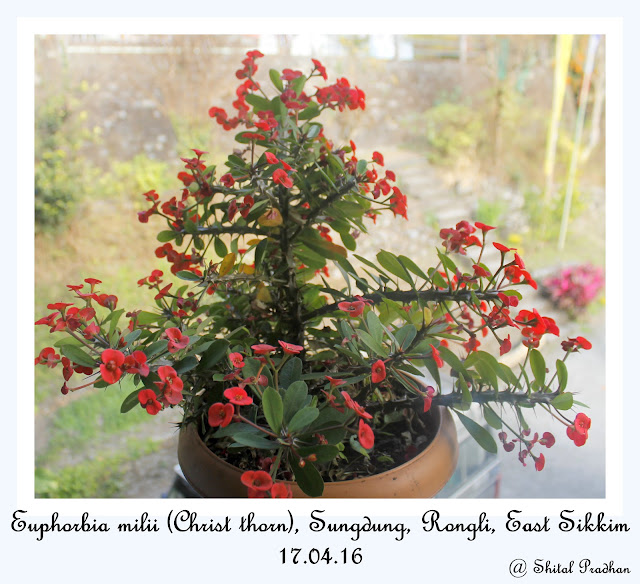Scientific
classification
Kingdom: Plantae
Family: Euphorbiaceae
Genus: Euphorbia
Species: E.
pulcherrima
Binomial name: Euphorbia pulcherrima Willd. ex Klotzsch
Other
Names: Poinsettia, Christmas plant, lobster flower and the flame-leaf
flower
Lalupate (Nepali)
Special feature: The colored bracts—which are most
often flaming red but can be orange, pale green, cream, pink, white, or
marbled—are often mistaken for flower petals because of their groupings and
colors, but are actually leaves. (Wikipedia)
Poinsettias
received their name in the United States in honor of Joel Roberts Poinsett, who
introduced the plant into the country in 1828. Poinsett was a botanist, physician
and the first United States Ambassador to Mexico. He sent cuttings of the plant
he had discovered in Southern Mexico to his home in Charleston, South Carolina.
The word Poinsettia is traditionally capitalized because it is named after a
person. December 12th is Poinsettia Day, which marks the death of Joel Roberts
Poinsett in 1851. (extension.illinois.edu/)
.


